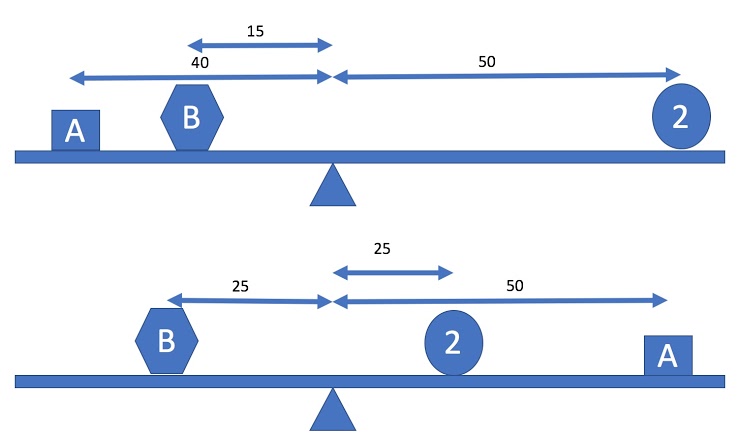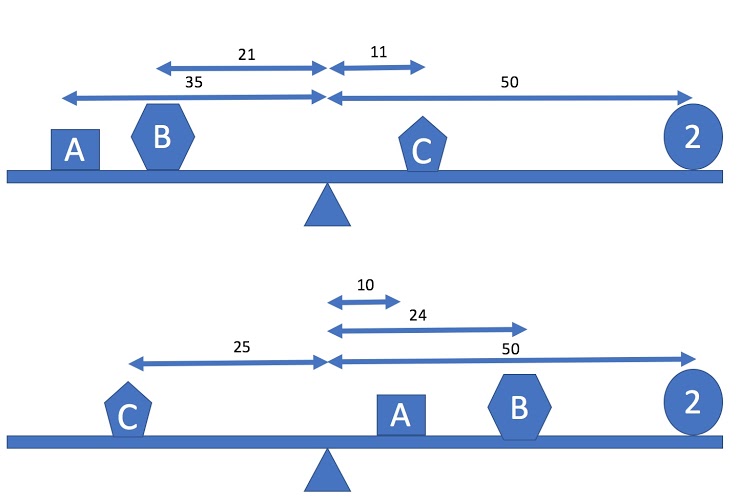4.1: Example linear system
- Page ID
- 63855
Suppose that we have three objects on a balanced beam. Also suppose we know that one has a mass of 2 kg, and we want to find the two unknown masses. Experimentation with a (assume weightless) meter stick produces these two balances. (diagram not to scale)

For the masses to balance we must have the sum of the moments on the left equal to the sum of the moments on the right, where the moment of an object is its mass times its distance from the balance point. That gives a system of two equations:
\[ 40A + 15B = 50 \times 2 \nonumber \]
\[ 25B = 25 \times 2 + 50A \nonumber \]
Find a solution for the above systems of equations and place your solution in the following cell. Make sure you delete the instructional text in the cell first.
Using Python as a calculator, verify that the solution you have found is correct.
Now lets consider a system where we have three unknown masses instead of two. Experimentation with a meter stick produces the two balanced states shown below (diagram not to scale). Write the equations for this system.

Find a solution to the second set of equations and report the mass for objects A, B and C.
Using Python as a calculator, verify that the solution you have found is correct.


